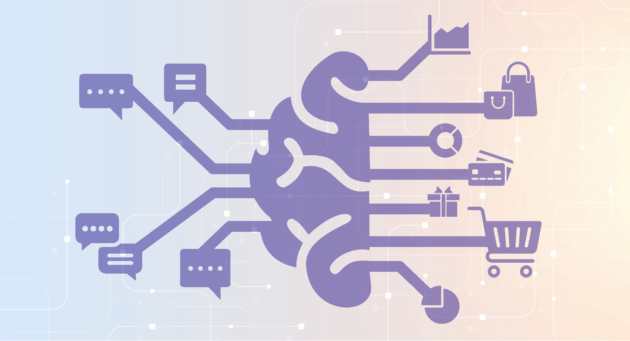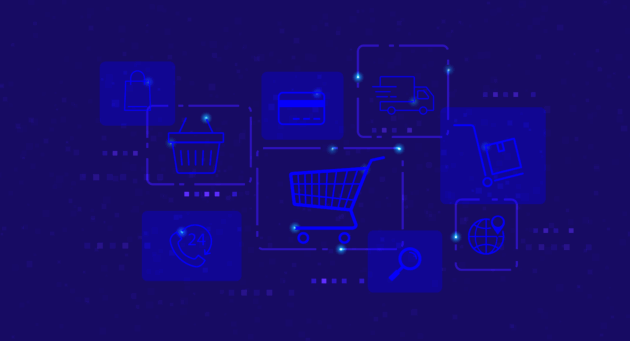Contextual advertising is the latest example of “everything old becomes new again.” It’s experiencing a resurgence among marketers and media owners due to three main factors: growing privacy regulation, consumers demanding more control and choice over their data, and the countdown to the end of third-party browser cookies and other online identifiers.
Since it can be delivered without third-party cookies, and because it helps marketers engage with consumers based on their interests, contextual targeting is quickly reemerging as a way for marketers and media owners to reach their audiences in a post-cookie world. But contextual targeting has been around for years, so why is it only now starting to realize its full potential as a marketing mainstay?
When contextual came onto the advertising scene around 2007, user-based behavioral targeting tied to third-party cookies was also gaining traction. This created a competition of sorts between the two, and the potential of contextual was overshadowed at that pivotal moment.
Ever since, third-party cookies dominated for tying data and audiences together, but it’s important to note that it took years to perfect the tactic. So even with Google extending their deprecation timeline to late 2023, marketers need to test alternative ways to reach and engage consumers across the open internet. (Re)Enter contextual targeting.
I recently did a Tech Talk webinar with eMarketer on this topic, which you can watch here. And based on the number of stellar questions that came in during that session from marketers and media owners, it’s clear that there are myths and misunderstandings about contextual targeting that I’d like to dispel here and now:
Myth #1: Contextual advertising will replace retargeting.
One thing that’s clear is there won’t be just one solution to replace third-party cookie-based advertising. That’s why we see contextual as a complement to addressable targeting and retargeting. It will serve as more of a companion solution to drive qualified visits and site traffic in ways that wouldn’t have been intuitive in the past.
In fact, we see contextual as one of three types of targeting that will lead the way after the demise of third-party cookies.
Aside from contextual, we’ll also continue to see the addressable, one-to-one targeting that marketers and media owners are accustomed to. In various industry conversations I’m involved in, it’s predicted that roughly only 15-30% of online consumers will be reachable this way. Addressable targeting in the post-cookie era will be enabled by stitching together marketer and media owners’ first-party data that carries a consumer opt-in on both sides. Examples of this include website logs, app data, and offline data sources like CRM files and customer data platforms (CDPs).
We’ll also see plenty of cohort targeting, and not just the browsing cohorts proposed by Google’s Privacy Sandbox. The key with all cohort approaches are they will, like contextual, target the interests of groups of consumers, rather than individuals. Google’s plans are in the early stages of testing and Criteo is a leading participant in testing FLoC (Federated Learning of Cohorts). We will continue to learn more about how it works and performs for our clients and the industry.
Myth #2: Contextual advertising is unsophisticated.
Contextual targeting in 2021 far surpasses the contextual targeting of yesteryear. It has evolved beyond keyword analysis and clusters to use machine learning that connects the dots on contextual signals and understands the deeper meaning of each page.
Contextual targeting can also be fueled with first-party commerce data to help marketers drive meaningful outcomes across the entire customer journey. All of this makes me think that had behavioral targeting not come around way back when, contextual may have been perceived differently in the past — and that it could potentially be revolutionary moving forward.
For example, we’re also now able to cluster consumer cohorts around a specific SKU or product type (online or offline) and then merge those cohorts with contextual signals from content across the open internet. By running this combination against every URL in Criteo’s media network, marketers can automatically determine the affinity that certain cohorts have for certain types of content and advertise in optimal locations.
This approach helps us understand the best kind of content to reach people in a buying mindset for certain products that may not seem super apparent or obvious at first glance.
Myth #3: Contextual targeting is only for brand advertising.
Contextual took a back seat to behavioral targeting for over a decade, but it’s emerging as a great option for more than just brand advertising.
In our initial tests, we can look at our clients’ contextual campaigns side by side with their user-level or audience-based campaigns that leverage their first-party data, and we see that they’re able to reach unduplicated, new audiences who are in a buying mindset.
We’re able to drive mid and lower-funnel results, including improved click-through rate (CTR) and cost per qualified visit, showing value well beyond branding metrics. Google’s moratorium means we can continually improve on side-by-side results today — while third-party cookies are still in play.
And of course, this makes us hungry to do more scaled testing to better set clients up for success in a post third-party cookie world.
Myth #4: Only a massive amount of first-party data will benefit contextual targeting strategies.
Even if a marketer or media owner only has a small percentage of first-party data, it still represents a “truth set” that can be connected, enriched, and activated to achieve commerce outcomes. The key here is being able to connect a first-party truth set across both the buy and sell side, since consumers won’t always create logins with durable identifiers across all sites they visit.
By making it easy to connect first-party data, we can help marketers and media owners understand the people who do give permission to leverage their data and create a foundational strategy without third-party cookies.
Developing a test-and-learn mentality, now.
From Criteo’s perspective, we’re seeing about 50% of marketers spending on contextual advertising now to prepare for the end of third-party cookies — and in our opinion, that’s not enough.
It’s critical that while third-party cookies are still available, marketers and media owners don’t waste the opportunity to test alternative solutions. Cohort models learn and optimize based on volume and testing, so by encouraging more test-and-learn strategies, we want to ensure all players are in a good place once the cookie countdown ends.
The data that is permission-based and owned by the marketers and media owners we work with is going to be the bedrock of the advertising industry for many coming years, so it’s imperative that we connect your data and perfect our models to enter this brave new world with confidence.
We as a collective industry have a once-in-a-career opportunity to make sweeping changes to how we reach and resonate with consumers — and we have roughly two years to do it. We encourage everyone to test (with us or other partners you’re working with) to understand results now, so the industry can be in the best possible position in 2023.
To watch my full contextual webinar with eMarketer, including the Q&A with global marketers and media owners, complete the short form here.
















